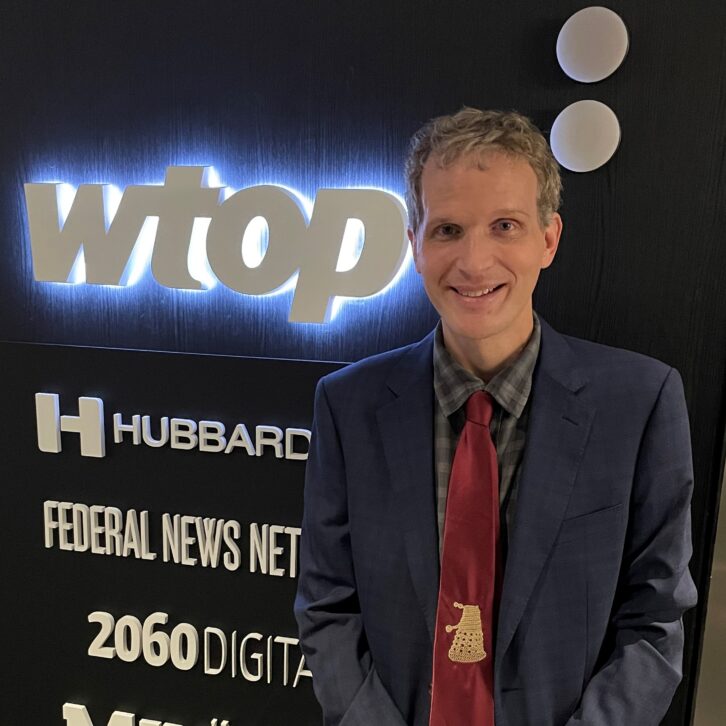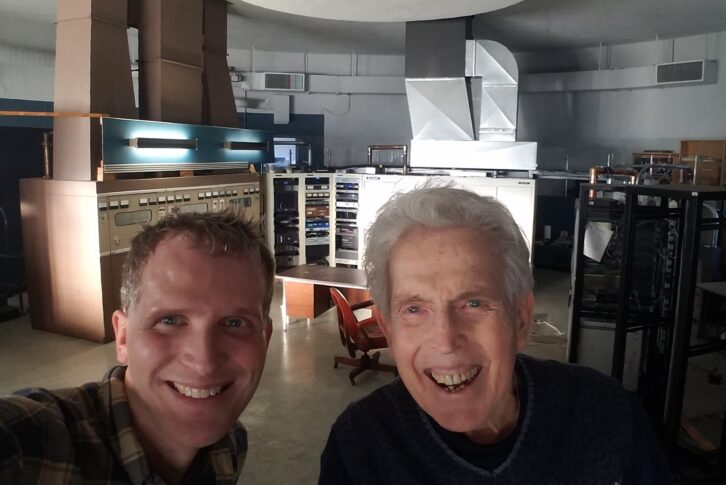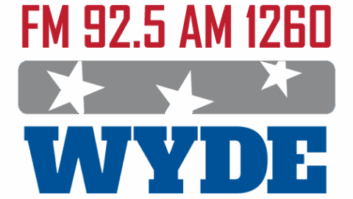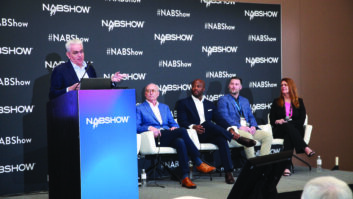Perhaps it was his sense of adventure, or the fact he comes from an R&D background. Whatever it was, Dave Kolesar knew that once he converted AM station WWFD in Frederick, Md., to full digital transmission, there was no going back to analog for the radio station.
WWFD recently concluded its five-year experimental phase of testing the all-digital MA3 mode of HD Radio, but it remains a full-time all-digital station. The FCC now allows AM stations to use all-digital if they wish. 
Kolesar and Xperi Corp. conducted extensive testing on the station’s operations through those five years. During that time a few other stations have turned on MA3, but uptake has not been widespread.
Yet Kolesar says he is even more optimistic about the technology today.
“There are lots of questions about the future of all-digital AM, and the same can be said for analog AM, whether it will survive,” he told Radio World.
“The sound is FM-quality. You can transport metadata. It looks good in the dash with album art and the station logo, something you can’t do on analog AM. There is lots to like.”
Kolesar is senior broadcast engineer at Hubbard Radio and this year’s recipient of the NAB Radio Engineering Achievement Award.
His primary role for the past 17 years has been as the transmitter engineer for the WTOP flagship news station, its sibling Federal News Radio WFED(AM), and WWFD. He also programs The Gamut, a Triple A music format heard on WWFD. This year’s recipient of the NAB award on the television side is Winston Caldwell.
Innovator and advocate
The NAB describes Kolesar as a broadcast engineering pioneer.
“In addition to his efforts to make all-digital AM radio a reality, Kolesar has been an advocate for all-digital AM within the industry, sharing and documenting his work in numerous technical papers and at conferences, and continuing research on ways to improve all-digital AM performance,” NAB stated in its announcement.
Kolesar has helped lead the discussion and discovery of all-digital AM radio. He flipped WWFD (820 kHz) to all-digital in 2019, the first AM station of its kind in the United States to do so.
He says he has been “floored” by the results.
“We saw an effective increase in our usable coverage area, thanks to the forward error correction you get with digital broadcasting. Reception is more robust around structures like bridges and under power lines. There is no going back to analog,” Kolesar said.
“What we have is a mode of broadcasting that looks, sounds and feels just as good as any other broadcast service in a motor vehicle.”
Turning on MA3 means that listeners with analog AM receivers cannot hear a station. Only those with HD Radio receivers can pick it up.
But Kolesar says Xperi’s DTS AutoStage and RadioDNS have helped level the playing field for AM stations that use the MA3 mode. In fact WWFD recently sold its FM translator to another company, making WWFD a standalone all-digital AM station.
“We had found that most of our listeners had already migrated to 820 AM because of its much larger footprint. Part of our strategy from the beginning was to use the FM to promote the better coverage of the AM — and stereo sound, actually. The FM was mono because it was on a noisy channel.”

NAB says his insights have benefited other broadcasters considering their AM options.
“I tell broadcasters: If their long-term goal is to keep their AM broadcast transmission alive, I think it is necessary to go digital eventually. Because analog AM radio broadcasting is sliding into oblivion. It’s an awful user experience, and digital solves a lot of those problems.
“It’s going to be necessary for broadcasters to improve the service so it is once again desirable for listeners. AM needs good content and better technology to meet listener expectations,” he said.
Another benefit is better reception within electric vehicles. Kolesar says AM MA3 likely will require less expensive filtering in all-electric cars.
He has given numerous presentations at NAB Show Broadcast Engineering & IT Conferences, including one this year about AM carrier power reduction in the MA3 mode with Xperi’s Paul Peyla.

An R&D guy in radio
Kolesar earned a master’s degree in electrical engineering from the Catholic University of America. Earlier in his career he worked as an electronics engineer in the Information Technology Division of the U.S. Naval Research Laboratory.
He says the jump from lab to field and into broadcasting required some nerve. Yet it also seemed natural, given that he had been building Radio Shack AM broadcast kits since he was six. And as a teenager he built what he jokingly calls a “Part 15 and a half” station in his bedroom to broadcast to his neighborhood in Cheverly, Md.
“I had a mentor when I worked in the research lab by the name of Edward Barr. He has passed on now. He never worked in broadcasting but followed the industry closely. He encouraged me to explore my passion for broadcasting and encouraged me to leave the lab for an industry I loved.”

Kolesar expressed appreciation for Joel Oxley, general manager of WTOP, and Dave Garner, VP of engineering for Hubbard Broadcasting, for having the faith in him to offer a job.
“I think they kind of knew what they were getting into when they hired an R&D guy from the Naval Lab. They’ve allowed me to go down these different paths.”
He credits Xperi for helping put the all-digital AM radio station on the air and working with WWFD during the experimental authorization phase.
“They helped us figure it all out. We kind of fumbled our way through it — how to maximize the bandwidth and performance of the antenna system and work through it to make the station sound good.
“When you are Serial Number 1 of anything, there is a lot of stuff to figure out.”

And perhaps his experimentation isn’t done just yet. “We are looking at applying for another experimental authority later this year. We want to finish work on ways to reduce the level of the reference carrier in the MA3 signal, as a power saving measure and possibly even to see if it is feasible to redistribute some of that power to other digital carriers within the signal to improve robustness.
“We hope to do some field trials to see if there are possible tweaks to the MA3 standard itself in order to improve performance.”
Kolesar, 46, is an avid reader who loves technical and engineering books, along with science fiction, historical fiction and mysteries. He is also a past recipient of the Radio World Excellence in Engineering Award and Engineer of the Year Award from Chapter 37 of the Society of Broadcast Engineers







